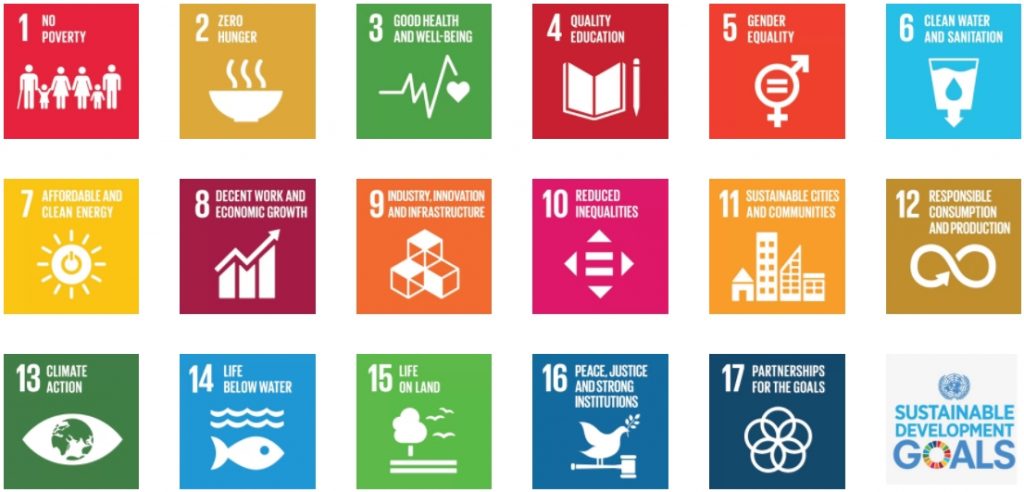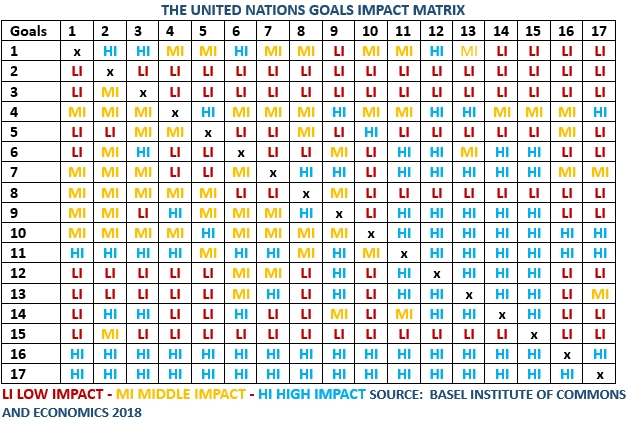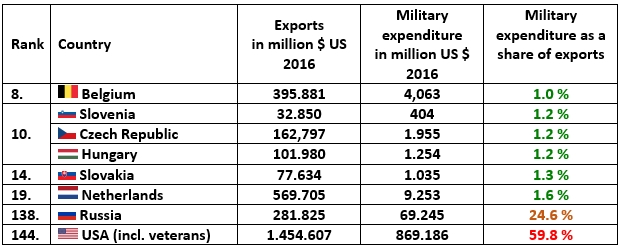Interactions between Common Global Goals – make your choice
Imagine a group of people discussing and agreeing on 17 common goals. In general they will sort of voting on the goals with the most support across the group. So their goals are in fact a chart on what they favor. But one thing they never do is to thinking on the dependencies and interactions between the goals. You can see that in every local administration budget where measures and limits on spending are confronted with the projects they want to fund. One of the two doesn’t fit at the end. Goals collide.
Now imagine 193 countries agreeing on the 17 Global Goals, called the Sustainable Development Goals. Let’s have a look at them:

Of course none of us would find any of them irrelevant or useless. But after two years within the process to promoting these goals – let’s call them the Global Goals – some goals achieve much more support and funding than others. The reasons for that choice are different, but two motivations can be mentioned:
1) Choosing Global Goals that a government or an organization can easily meet and achieve without any extra intellectual, political or financial efforts, e.g. of course the crops industry feels to ‚fighting hunger‘ (Goal 2). Rich OECD countries implement compliance and governance to achieving goals 3, 4, 5, 6, 7, 13, 14 and 15.
2) Choosing Global Goals were you can attend funding from donors. This choice quickly leads to a couple of goals such as 3, 4, 5, 6, 7, 11, 12, 13, 14 and 15.
As we can see, both motivations lead to the choice of the same goals. But unfortunately the 17 Global Goals as well have an interaction between them. ‚Zero Hunger‘ (Goal 2) is even a goal that requires to eliminating poverty (Goal 1) and social inequality (Goal 10) before and as well to achieving peace (Goal 16) of course. On top Goal 17 is about financing all the Global Goals. To achieving any of them without any extra funding is out of reach.
To better understanding these interactions we created the first UN Goals Impact Matrix, that you can download here.

Even if you won’t share all of the estimates lying behind this matrix you will being inspired by playing a bit with it.
We therefore provide a MS Word version here so that you fill it out by yourself.
The paradox thing is, that the Global Goals with the highest impact are the ones with the lowest support. So the funding and support moves to the low impact, which we explained before by the motivation.
So how can we create any motivation to considering Goals 10, 11, 16 and 17 as well? If we don’t, the Global Goals will fail.
Kommentare deaktiviert für Interactions between Common Global Goals – make your choice
admin am 23. Februar 2018 in Allgemein






